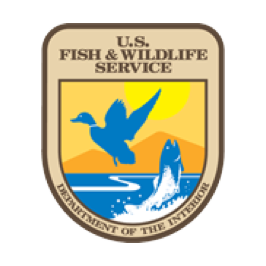Zoonotic Disease Corner
Safe Hunting, Safe Harvesting: How hunting and harvesting practices are linked to human health
Dr. Tolani Francisco
Oct 5, 2022
Why be concerned about One Health when hunting and harvesting?
It is fall, many are hunting and preparing for the long upcoming winter months. Much like our native ancestors, we give thanks for a successful harvest and for the opportunity to still be able to hunt and harvest for our families. As native hunters harvest animals, it is important to remind of proper measures all need to take to ensure the meat they harvest is safe for their families to consume.
In general, one shot to the heart is the best place to ensure the animal has died in a humane (least amount of struggle and pain). This is important for a number of reasons. Lactic acid (what causes sore muscles when exertion has taken place) will actually alter the taste of the meat and decreases the amount of time before decay begins or increases the likely hood of spoilage when temperatures are above 40 degrees Fahrenheit. Blood contains large amounts of heavy metals such as Iron and these leave deposits in the vessels which also affects the taste of meat. This is the primary reason meat is hung or cured for up to 21 days, decreasing the blood residual and therefore heavy metal deposits in the muscle tissue.
Perhaps a more important reason for a clean heart shot when hunting is the potential for perforating the intestines or stomach. The gastric contents contain high numbers of bacteria which can result in vomiting and diarrhea in humans. The fecal bacteria can very easily contaminate the large muscle bundles during field dressing, especially if the animal has been gut shot. Fecal or coliform bacteria can be life threatening to persons with compromised immune systems which include young children, the elderly or people with chronic health conditions such as diabetes, high blood pressure, long COVID, cancer and a host of other chronic health conditions. In severe cases, these bacteria can result in organ failure such as kidney failure also known as Acute Hemolytic Uremic Syndrome which often results in either daily dialysis or organ failure and even death.
It is important to field dress animals using clean (washed with soap and water) instruments (knives), where possible, use of gloves and preventing any aspiration of any gut contents or spraying the face. If gut contents saturate clothing, it is important to launder these with antibiotic soap or a dilute (1 cup in 5 gal of water) bleach solution separate from normal family laundry.
Urine (bladder liquid) can also contain organisms if the animal has certain health conditions such as leptospirosis. Most hunters know to not perforate the bladder or allow any urine to penetrate the muscle tissue. Urine can also greatly alter the flavor of the meat and affect the spoilage time as well as act as a vector for any urine organisms including prions which cause Chronic Wasting Disease.
Meat should always be held at temperatures below 40 degrees Fahrenheit to decrease bacterial growth. When making jerky or drying meats, it is often helpful to brine the meat in salt which will help decrease bacterial growth leading to either meat spoilage or decay. Grinding of meat increases the surface area where more bacteria can locate. This is the main reason hamburgers are always cooked to reach an internal temperature of 165 degrees Fahrenheit. If prior to harvest, the animal does not appear in good health, it is advisable to not harvest for human consumption.
Happy Hunting and Harvesting this fall, just be smart and keep your families safe and healthy.
Dr. Tolani Francisco is the founder and president of Native Healing LLC, a 501(c)3 organization dedicated to serving tribes through animal health. NAFWS contracted Dr. Francisco to assist Tribes with zoonotic disease concerns and she is available for technical support at [email protected].






